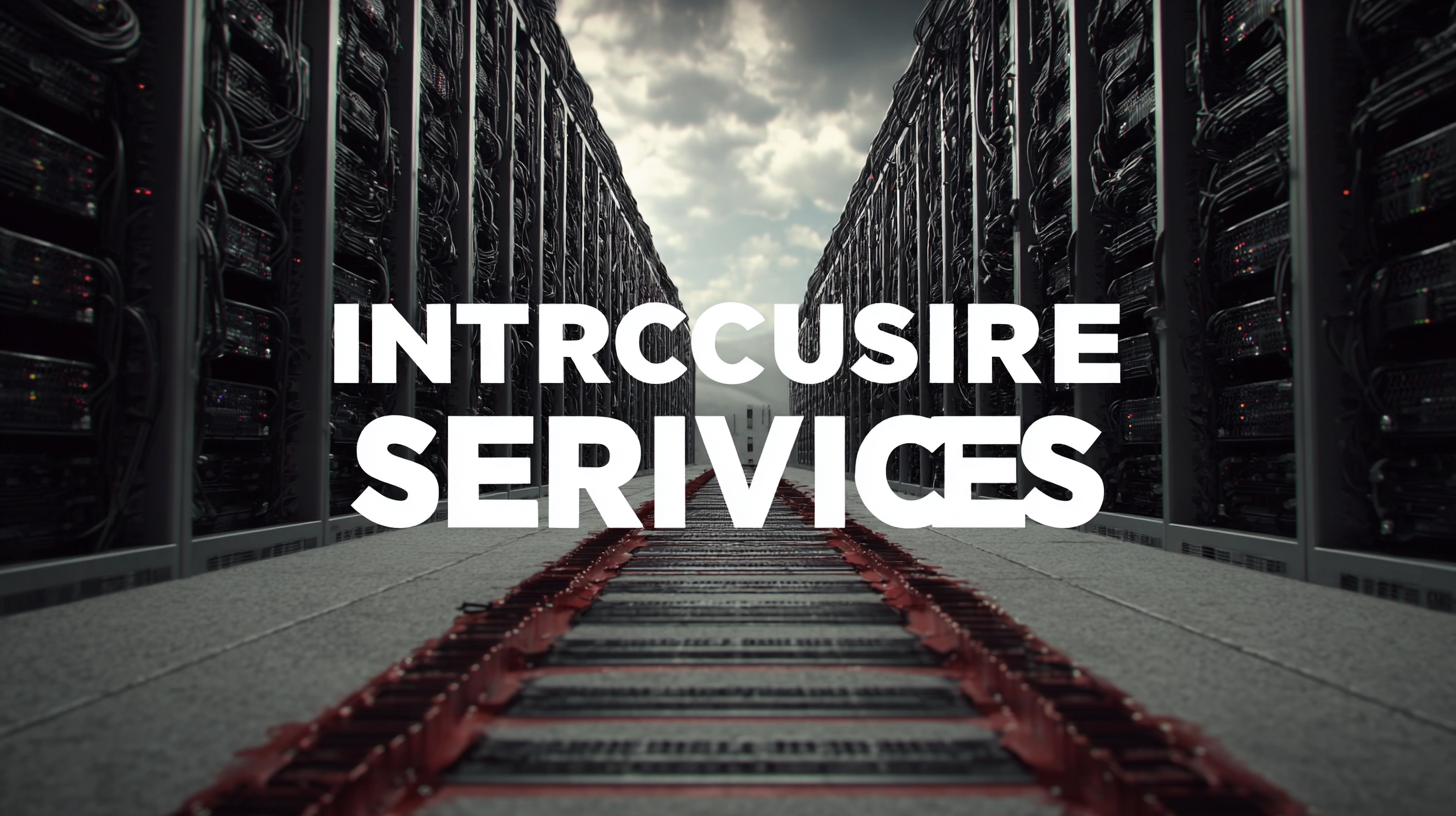Unlocking the Power of Best Infrastructure Services with InDepth Technical Specifications and Implementation Strategies
As we approach the transformative landscape of 2025, the significance of robust infrastructure services cannot be overstated. According to a recent report by MarketsandMarkets, the global infrastructure services market is projected to reach $2 trillion by 2025, driven by increasing demand for advanced connectivity and digital transformation across various industries. With the rapid evolution of technology and shifts in consumer behavior, organizations are seeking in-depth technical specifications and effective implementation strategies to capitalize on this growth.

Unlocking the power of best infrastructure services allows businesses to enhance their operational efficiency and deliver superior customer experiences. In this blog, we will delve deeper into the critical components that define effective infrastructure services and explore actionable strategies that can help organizations thrive in an increasingly competitive environment.
Empowering Businesses through Advanced Infrastructure Services: A Comprehensive Overview
In today's rapidly evolving digital landscape, businesses are increasingly recognizing the importance of advanced infrastructure services to drive success. According to a recent report by Gartner, organizations that invest in robust IT infrastructure can realize up to a 30% increase in efficiency and productivity. This highlights the necessity for companies to transition from traditional models to innovative, scalable infrastructure solutions that not only meet current demands but also anticipate future growth.
A comprehensive overview of advanced infrastructure services reveals a myriad of benefits, including enhanced data management, improved security, and cost reductions. For instance, a study by IDC showed that companies adopting cloud-based infrastructure could reduce IT costs by as much as 25%. Additionally, implementing infrastructure services with detailed technical specifications empowers organizations to tailor solutions specific to their unique needs, enabling greater operational flexibility and responsiveness to market changes. As businesses seek to gain a competitive edge, leveraging these advanced services becomes crucial for long-term sustainability and success.
Key Technical Specifications Driving Infrastructure Service Efficiency in 2023
In 2023, the demand for efficient infrastructure services has surged, driven by rapid technological advancements and evolving customer expectations. Key technical specifications that enhance service efficiency include robust network architecture, dynamic resource allocation, and automated management systems. According to a report by Gartner, organizations that adopt software-defined networking (SDN) achieve up to 40% improvements in operational efficiency. This shift enables businesses to easily manage bandwidth and optimize resources in real-time, significantly reducing downtime and enhancing service delivery.
Moreover, implementing cloud-native principles plays a vital role in driving infrastructure efficiency. A study from IDC indicates that 70% of organizations utilizing cloud-native architectures report higher scalability and flexibility compared to traditional setups. By leveraging microservices and containerization, businesses can deploy applications swiftly and respond to market changes effectively. These specifications not only improve performance but also reduce operational costs, aligning with the growing need for sustainable and cost-effective solutions in the infrastructure services sector.
Unlocking the Power of Best Infrastructure Services in 2023
Strategies for Successful Implementation of Best Infrastructure Services: Real-World Case Studies
In today's rapidly evolving technological landscape, the effective implementation of best infrastructure services has become crucial for organizations striving for success. Real-world case studies illustrate that leveraging advanced technologies, particularly artificial intelligence, can significantly enhance operational efficiency in various sectors, including healthcare and climate resilience. By integrating AI capabilities, businesses are not only optimizing their processes but also improving their service delivery and decision-making. For instance, healthcare systems are increasingly utilizing AI for clinical practice, allowing for more informed diagnoses and personalized patient care, particularly in low- and middle-income countries.

Moreover, the exploration of hybrid cloud solutions demonstrates how organizations can unify their infrastructure to achieve greater flexibility and scalability. These implementations offer a strategic advantage by allowing businesses to adapt to changing demands and manage resources more effectively. As seen in numerous case studies, the amalgamation of public, private, and on-premises cloud services fosters an environment conducive to innovation. Therefore, focusing on these real-world applications of infrastructure services can provide valuable insights into how organizations can harness technology for impactful results, paving the way for future advancements and transformative practices within their operations.
Leveraging Data Analytics to Optimize Infrastructure Management and Performance
In the era of artificial intelligence, leveraging data analytics has become crucial for optimizing infrastructure management and performance. According to recent market forecasts, the data center infrastructure management market in Japan is expected to reach a substantial size of $38.417 billion by 2035, reflecting a compound annual growth rate (CAGR) of 8.66%. This growth underscores the demand for innovative solutions that enhance the flexibility, uptime, and return on infrastructure investments. With the rise of large-scale data centers, significant investments are anticipated by 2025, driving advancements in computing, storage, networking, and cooling technologies.

As organizations strive to harness the power of their data, the need for sophisticated data platforms has never been more evident. A prominent retail giant recently tasked its data analytics team with a mission: to optimize national sales predictions and inventory allocations in just two hours. Such scenarios exemplify the urgent need for robust analytical capabilities and agile infrastructure, facilitating data-driven decision-making in a rapidly evolving landscape. By integrating advanced algorithms and leveraging cloud-native solutions, businesses can transform their data analytics efforts, ultimately leading to improved infrastructure performance and operational efficiency.
Future Trends in Infrastructure Services: Predictions Based on Current Industry Metrics
As industries worldwide continue to evolve, infrastructure services are experiencing a transformation driven by technological advancements and shifting market needs. Current industry metrics indicate a growing reliance on cloud-based solutions, high-speed connectivity, and enhanced digital security measures. These metrics not only highlight the increasing demand for scalability and flexibility but also underscore the necessity for robust infrastructure that can adapt to future challenges. As organizations aim for resilience, they will increasingly prioritize hybrid models that blend traditional resources with innovative solutions.
Looking ahead, several trends are poised to shape the future of infrastructure services. Edge computing, for instance, is gaining traction as businesses seek to optimize performance by processing data closer to the source, reducing latency and enhancing user experience. Additionally, the rise of artificial intelligence will enable more proactive management of infrastructure, allowing organizations to predict and address potential issues before they escalate. As sustainability becomes a focal point, infrastructure services are also expected to evolve towards greener technologies, emphasizing energy efficiency and reduced carbon footprints, thus ensuring that while we unlock their power, we also embrace our responsibility to the planet.
Unlocking the Power of Best Infrastructure Services with InDepth Technical Specifications and Implementation Strategies - Future Trends in Infrastructure Services: Predictions Based on Current Industry Metrics
| Service Type | Technical Specifications | Implementation Strategy | Future Trends |
|---|---|---|---|
| Cloud Hosting | Scalability, High Availability, Security | Adopt multi-cloud strategies, Continuous integration/continuous deployment (CI/CD) | Increased hybrid cloud adoption, Enhanced AI integration |
| Data Center Services | Redundancy, Energy Efficiency, Security Compliance | Implement green technologies, Virtualization techniques | Shift towards edge computing, Increased automation |
| Network Services | Bandwidth, Latency, Quality of Service (QoS) | Adopt Software-Defined Networking (SDN), Network function virtualization (NFV) | Emerging 5G networks, Intelligent networking |
| Cybersecurity Services | Threat Detection, Incident Response, Compliance | Integrate AI for anomaly detection, Continuous monitoring | Proactive threat hunting, Zero trust architecture |
| Disaster Recovery Services | RTO, RPO, Data Redundancy | Regular testing and updates, Employee training | Increased reliance on automation, Integrating cloud solutions |